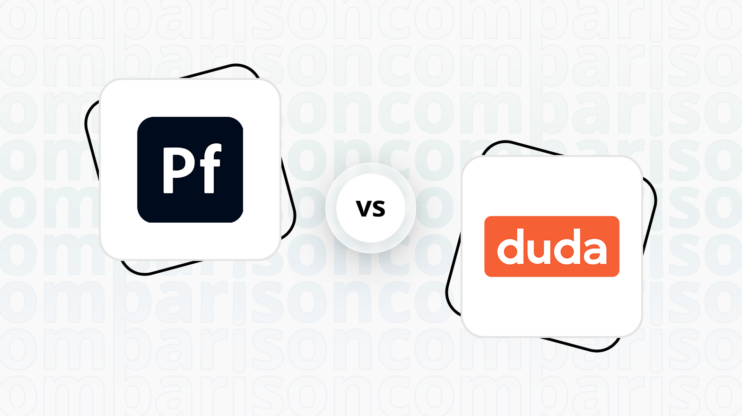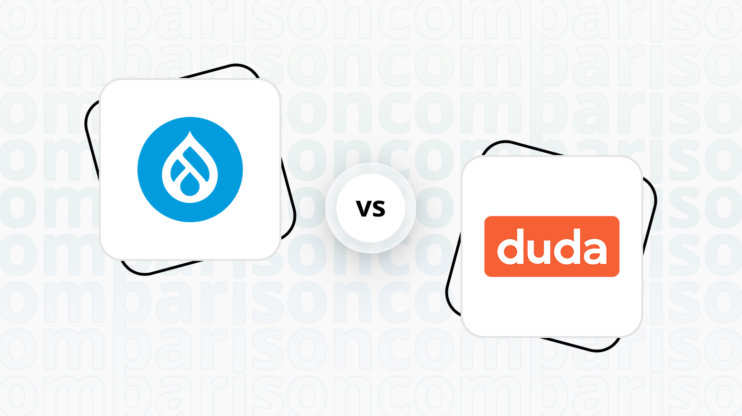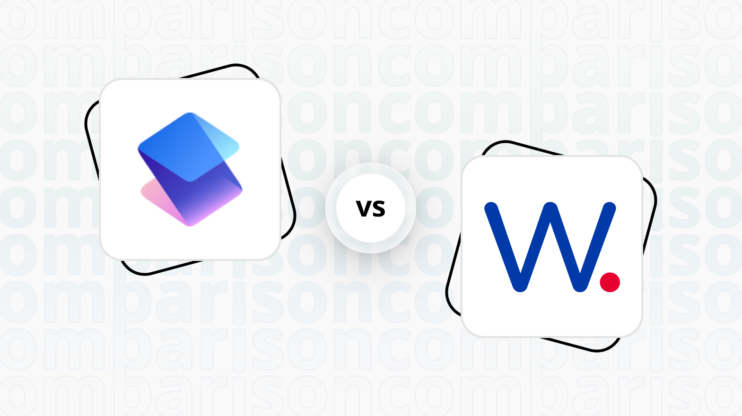Final verdict
Shopify and Showit cater to different user needs, each excelling in their respective domains.
-
Shopify (Overall Grade: 8.1/10)
is a robust ecommerce platform, ideal for businesses looking to scale their online stores. It offers comprehensive ecommerce features, advanced marketing tools, and strong security measures. Shopify’s proprietary cloud-based hosting ensures high performance and reliability, making it a top choice for serious online retailers. When comparing Shopify vs Showit, Shopify stands out for its ecommerce capabilities and extensive integrations. -
Showit (Overall Grade: 6.4/10)
is designed for creative professionals such as photographers, designers, and bloggers. It excels in design flexibility and ease of use, offering a drag-and-drop interface and a dual canvas for mobile and desktop views. Showit integrates seamlessly with WordPress for blogging, making it a great choice for users who prioritize design and content management. However, in the Shopify vs Showit comparison, Showit falls short in ecommerce functionalities and lacks the advanced features that Shopify offers.

|

|
|
|---|---|---|
|
Design functionalities & templates |
8.2 |
8.5 |
|
Ease of use |
7.5 |
8.6 |
|
Ecommerce |
9.2 |
4.8 |
|
Website Editors |
7.9 |
8.0 |
|
Product testing options |
8.1 |
8.3 |
|
Price |
8.2 |
7.9 |
|
Hosting quality |
9.0 |
7.3 |
|
Website speed optimization |
7.8 |
5.4 |
|
Plugins and integrations |
8.7 |
5.8 |
|
Marketing features |
8.8 |
7.2 |
|
Customer support |
8.6 |
6.4 |
|
Security |
9.0 |
8.3 |
|
AI capabilities |
7.9 |
0 |
|
User Management |
6.5 |
6.7 |
Best for ecommerce
 9.2
9.2
 4.8
4.8
Verdict
: Shopify is the clear winner for ecommerce, offering a robust set of features tailored for online businesses, while Showit is more suited for creative professionals needing basic ecommerce functionality.
-
Shopify
: With a score of 9.2, Shopify excels in providing a comprehensive ecommerce solution. It includes advanced inventory management, multiple payment gateways, and detailed analytics, making it ideal for businesses looking to scale. Shopify’s extensive app library further enhances its ecommerce capabilities, offering features like abandoned cart recovery and augmented reality. When comparing Shopify vs Showit, Shopify stands out for its depth and scalability in ecommerce. -
Showit
: Scoring 4.8, Showit is primarily a design-focused platform with basic ecommerce capabilities through integrations with Shopify Lite, WooCommerce, and other third-party tools. It is best suited for creative professionals who prioritize design flexibility and are looking to add simple ecommerce features to their visually oriented websites. While Showit offers great customization for website appearance, it lacks the comprehensive ecommerce tools that Shopify provides.
Best for informational & business websites
 6.8
6.8
 8.7
8.7
Verdict
: Showit is the superior choice for informational and business websites, offering greater design flexibility and ease of use compared to Shopify.
-
Shopify
: Shopify, scoring 6.8, is primarily an ecommerce platform. While it can be used for informational sites, its features are more geared towards online stores. The platform offers sleek, professional templates and robust tools for managing products, payments, and orders. However, for purely informational purposes, Shopify’s ecommerce-centric features may feel excessive and its learning curve steeper. -
Showit
: Showit, with a score of 8.7, excels in creating custom, visually appealing websites for creative professionals. Its drag-and-drop interface and dual canvas design for mobile and desktop views provide unmatched flexibility. Showit integrates seamlessly with WordPress for blogging, making it ideal for users who want a high degree of customization without coding. When comparing Shopify vs Showit, Showit stands out for its user-friendly design and focus on creative control.
Detailed comparison
Design functionalities & templates
Design FunctionalitiesRepresents how well each platform allows for creative design and customization of websites.Score Components:
- Template Variety (30%): Range and quality of design templates.
- Customization (30%): Flexibility and options for design alterations.
- User Interface (20%): Ease and intuitiveness of the design process.
- Responsiveness (10%): Adaptability to different devices and screen sizes.
- Innovation (10%): Unique design features and tools.
 8.2
8.2
 8.5
8.5
🏆
Winner: Showit.
If you’re looking for a platform that offers more creative control and a wide array of design features, Showit is the preferred choice.
Shopify’s templates are sleek and professional, ideal for ecommerce sites. They offer a sophisticated look with a focus on online stores. While the free template selection is less than that of Showit, Shopify’s premium theme store provides a variety of industry-specific options, offering advanced features for a strong brand presence.
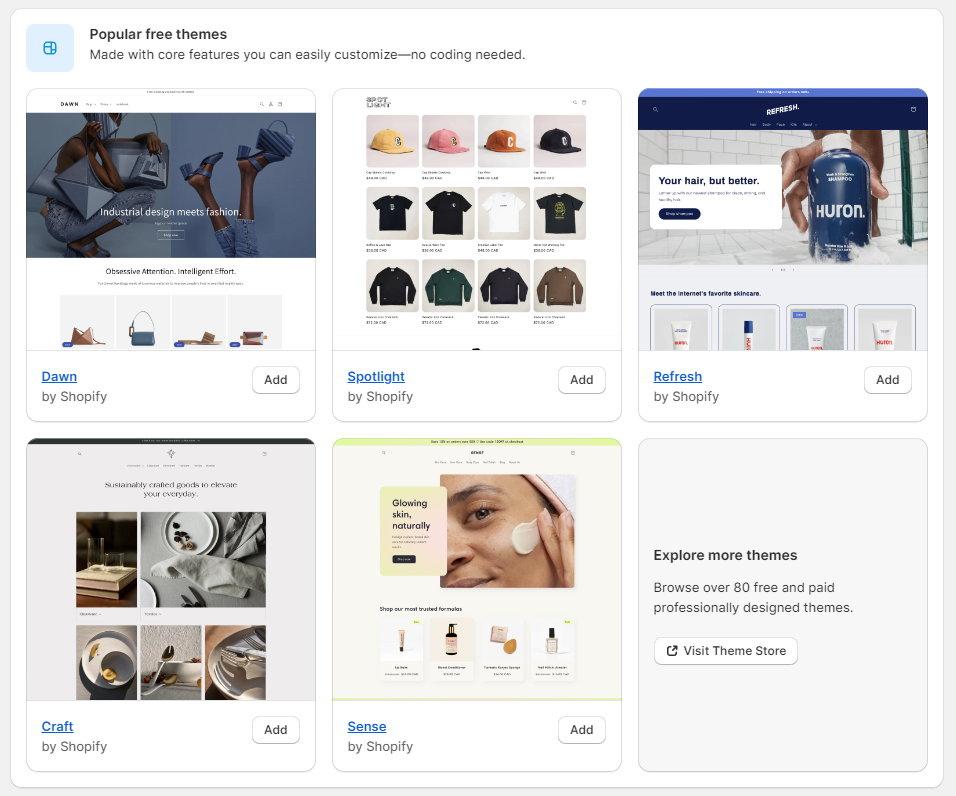
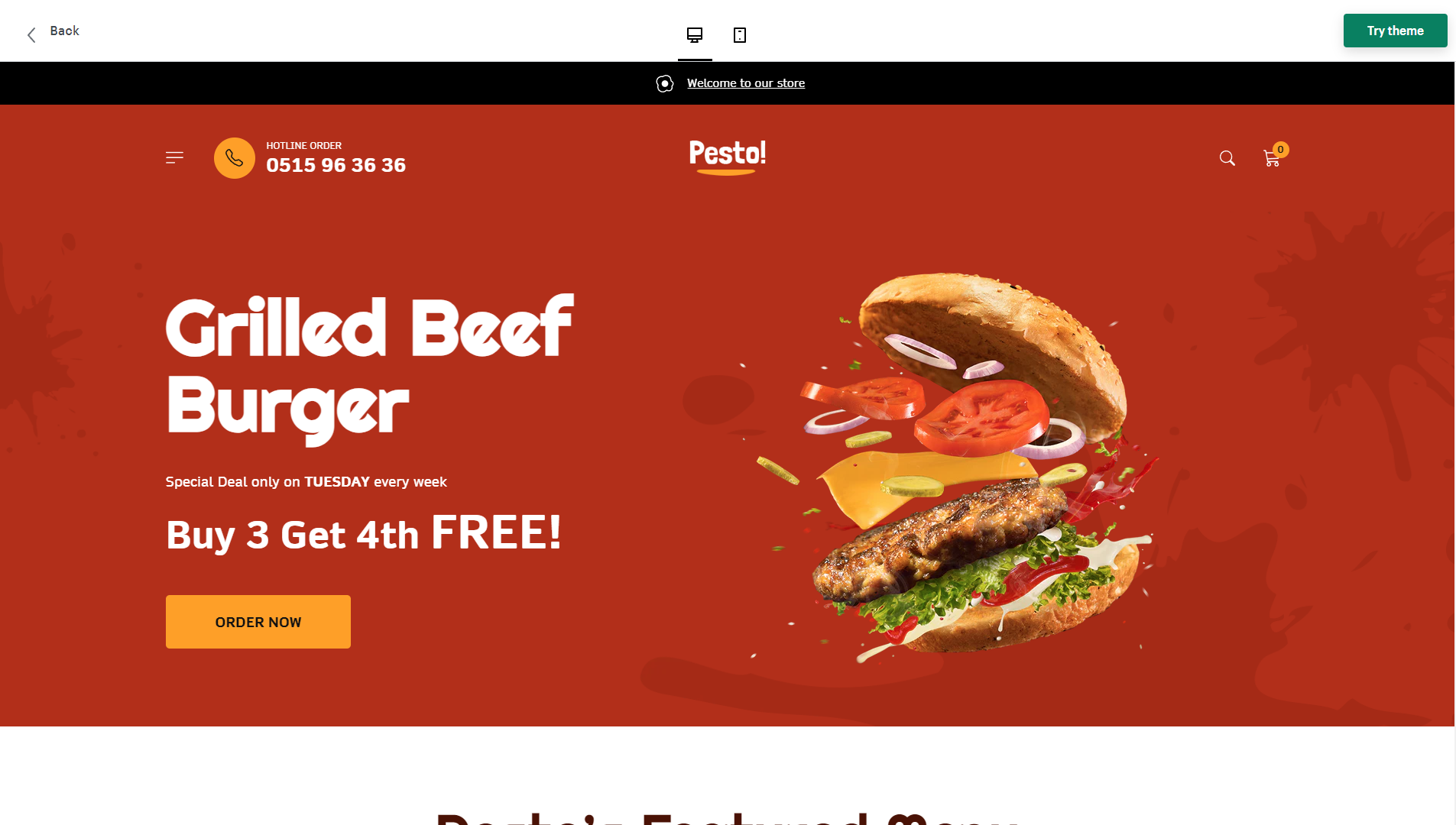
Compared to Shopify, Showit offers a wide variety of templates and designs, catering to diverse aesthetic preferences and business needs. Users can choose from an extensive collection that ranges from minimalist and sleek to bold and artistic, ensuring there’s something for every brand identity. The platform is known for its flexibility and user-friendly interface, allowing for easy customization of templates. With a constantly updating library, Showit ensures that users have access to the latest trends in web design, making it a popular choice for creatives and entrepreneurs looking to establish a unique online presence.
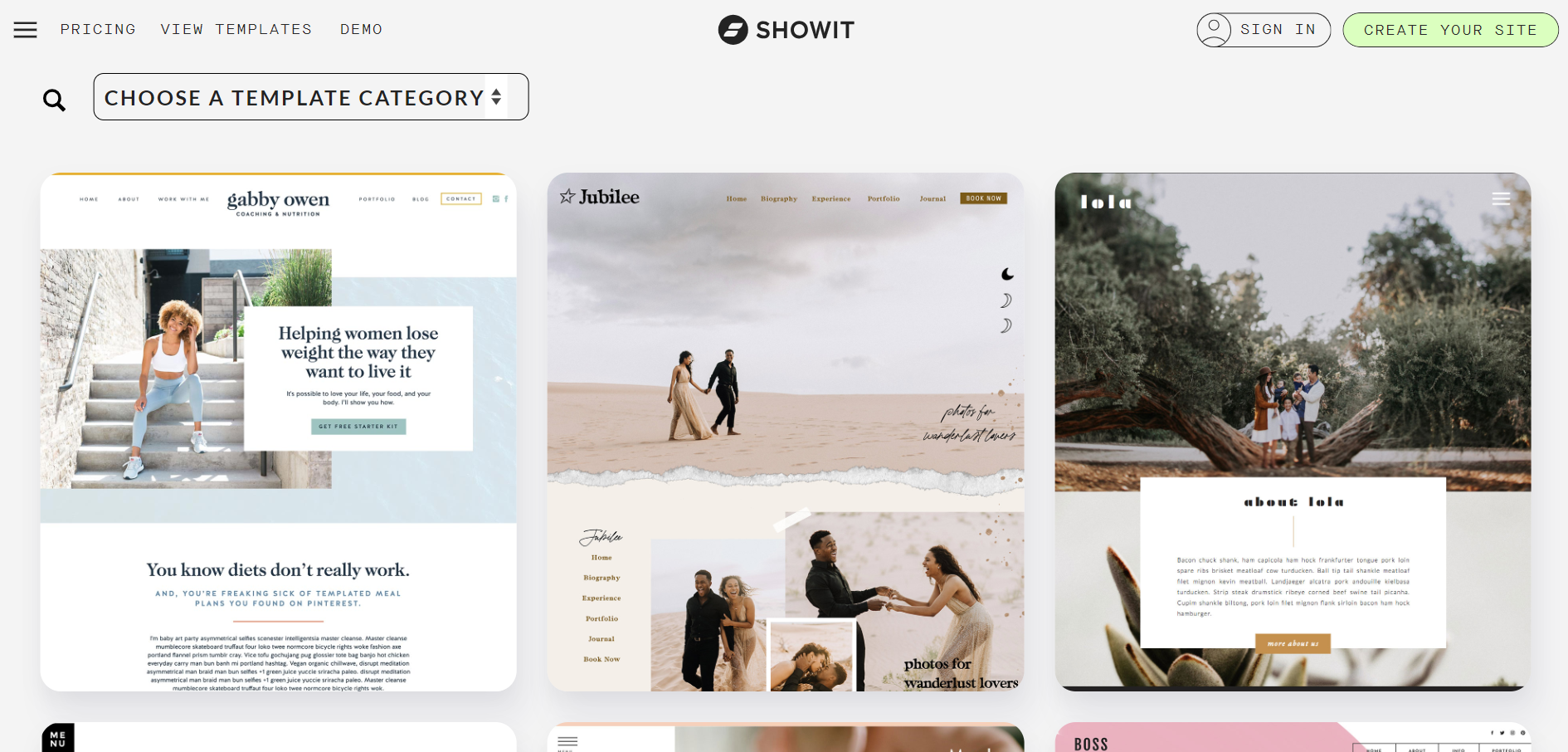
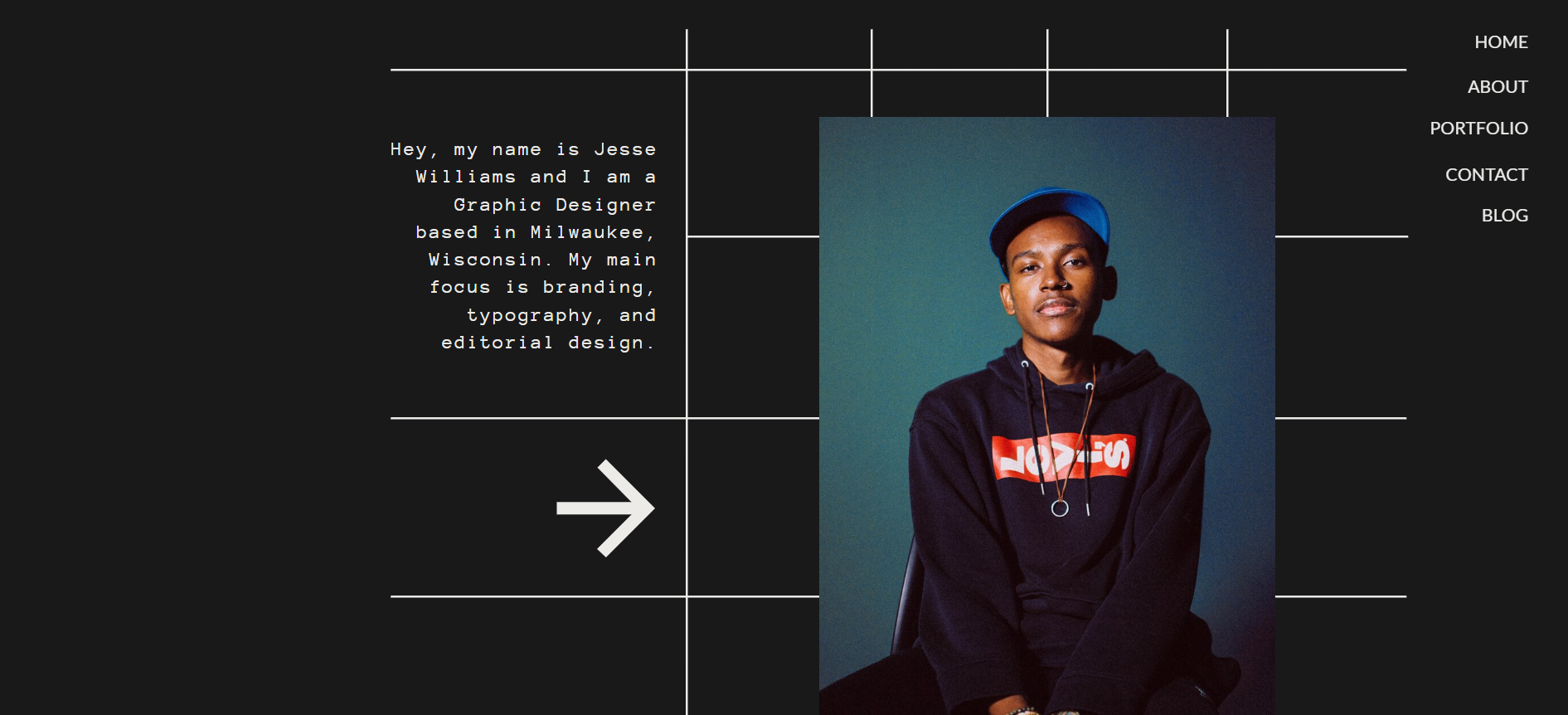
Get a head start on website creation with AI
Create a custom website tailored to your business needs 10X faster with 10Web AI Website Builder!
Ease of use
Ease of useReflects the platform’s overall user-friendliness.Score
Components:
- Learning curve (40%): Quickness and ease of getting started.
- Interface design (30%): Simplicity and intuitiveness of layout.
- User guidance (20%): Quality of tutorials and support.
- Flexibility (10%): Adaptability to various user skills.
 7.5
7.5
 8.6
8.6
🏆 Winner: Showit
. With a score of 8.6, Showit is a highly user-friendly website builder, designed with a drag-and-drop interface that makes it easy for users to create custom websites without needing any coding knowledge. Shopify, scoring 7.5, offers a robust platform but with a steeper learning curve, especially for those new to ecommerce. If ease of use is a priority, Showit is the clear winner in this category.
Learning Resources
🏆 Winner: Shopify
. While both platforms offer solid learning resources, Shopify goes a step further with its wide array of detailed tutorials and active community forums, making it easier for users to learn and adapt.
For ecommerce
EcommerceMeasures the platform’s effectiveness in supporting online business activities.Score Components:
- Ecommerce themes and templates (20%): Variety and design of templates.
- Product management (25%): Ease of managing and organizing products.
- Payment options (25%): Variety and convenience of payment methods.
- Ecommerce features (20%): Features for managing an ecommerce store.
- Integration (10%): Compatibility with external e-commerce tools and services.
 9.2
9.2
 4.8
4.8
Shopify is a leading ecommerce platform that provides a comprehensive set of features for online businesses. It offers tools for creating and customizing online stores, managing products, processing payments, and handling order fulfillment. On the other hand, Showit is primarily a website builder focused on design, offering great flexibility and creative freedom, making it ideal for visually oriented websites rather than extensive e-commerce platforms. It includes basic ecommerce functions but lacks the comprehensive ecommerce features found in platforms like Shopify.

|

|
|
|---|---|---|
|
Ecommerce themes and templates |
8.2 |
2.0 |
|
Product page customization |
8.5 |
2.5 |
|
Payment processing and commissions |
8.8 |
4.0 |
|
POS capabilities |
8.1 |
1.0 |
|
Payment gateways |
9.5 |
4.5 |
|
Product numbers |
9.0 |
3.0 |
|
Additional ecommerce features |
9.1 |
3.5 |
Shopify ecommerce features:
- Comprehensive store builder
- Shopify Payments and other gateways
- Advanced inventory management
- Multi-channel selling
- Abandoned cart recovery
- Detailed analytics and reporting
Showit ecommerce features:
- Shopify and WooCommerce integration
Ecommerce themes & templates
Shopify offers about 150 modern responsive themes for creating a virtual storefront, ensuring a good look on both desktop and mobile devices. While some themes are free, others cost between $170 to $380. In contrast, Showit does not have any ecommerce specific templates.
Product page customization
Shopify lets you have three options (like color, size, style) with a total of 100 unique variations. This limit may not pose a significant constraint, and it is suggested that for products with numerous options, creating separate listings on Shopify can be a more manageable approach. While Shopify offers titles, descriptions, and image galleries with zoom effects, customization options like adding ribbons, size charts, and wishlists are not as straightforward. However, Shopify distinguishes itself with additional features through its extensive library of extra apps, offering functionalities like reviews, Facebook stores, eBay item importers, and a unique Augmented Reality feature for an enhanced customer experience. On the other hand, Showit has very basic ecommerce capabilities, primarily through its integration with WooCommerce and Shopify.
Payment processing
When it comes to payment processing, Shopify offers payments with typical charges of
2.9% + 30¢
per online transaction on basic plans, and lower fees for higher-tier plans. However, it adds extra fees for using other payment gateways. Shopify Payments is Shopify’s own payment processing gateway. It allows merchants to accept credit card payments directly on their store without having to integrate third-party payment providers. This simplifies the payment process, reduces transaction fees, and streamlines the handling of finances. Showit, on the other hand, supports e-commerce by allowing integration with third-party platforms like Shopify Lite, ThriveCart, WooCommerce, and Podia, rather than offering direct payment processing or POS capabilities. Users can add e-commerce functionalities to their Showit sites using embed codes for “Buy Buttons” or similar features from these platforms. The choice of platform depends on the user’s specific needs, including product type, store size, and budget, as each platform has its own pricing and transaction fee structures. Additionally, the platform supports integration of PayPal pay button, allowing users to pay directly through their PayPal account.
Website Editors
Website EditorsEvaluates the platforms’ website building and editing capabilities.Score Components:
- Customization tools (40%): Range and power of editing features.
- Editor usability (30%): User experience within the editor.
- Design flexibility (20%): Freedom in layout and design changes.
- Update and maintenance ease (10%): Simplicity of updating and maintaining the site.
 7.9
7.9
 8.0
8.0
🏆
Winner: Showit
. Showit, with a score of 8.0, is designed for creating custom, responsive websites with a focus on ease of use, especially for photographers and creative professionals. It allows users to design their website visually with a drag-and-drop interface, eliminating the need for coding knowledge. Users can create highly customized pages by adjusting layouts, fonts, and colors, and can also incorporate multimedia elements like videos and images directly into their designs. Additionally, Showit offers deep integration with WordPress for blogging, enabling users to manage and publish blog posts within the same platform, providing a seamless experience from website design to content management.
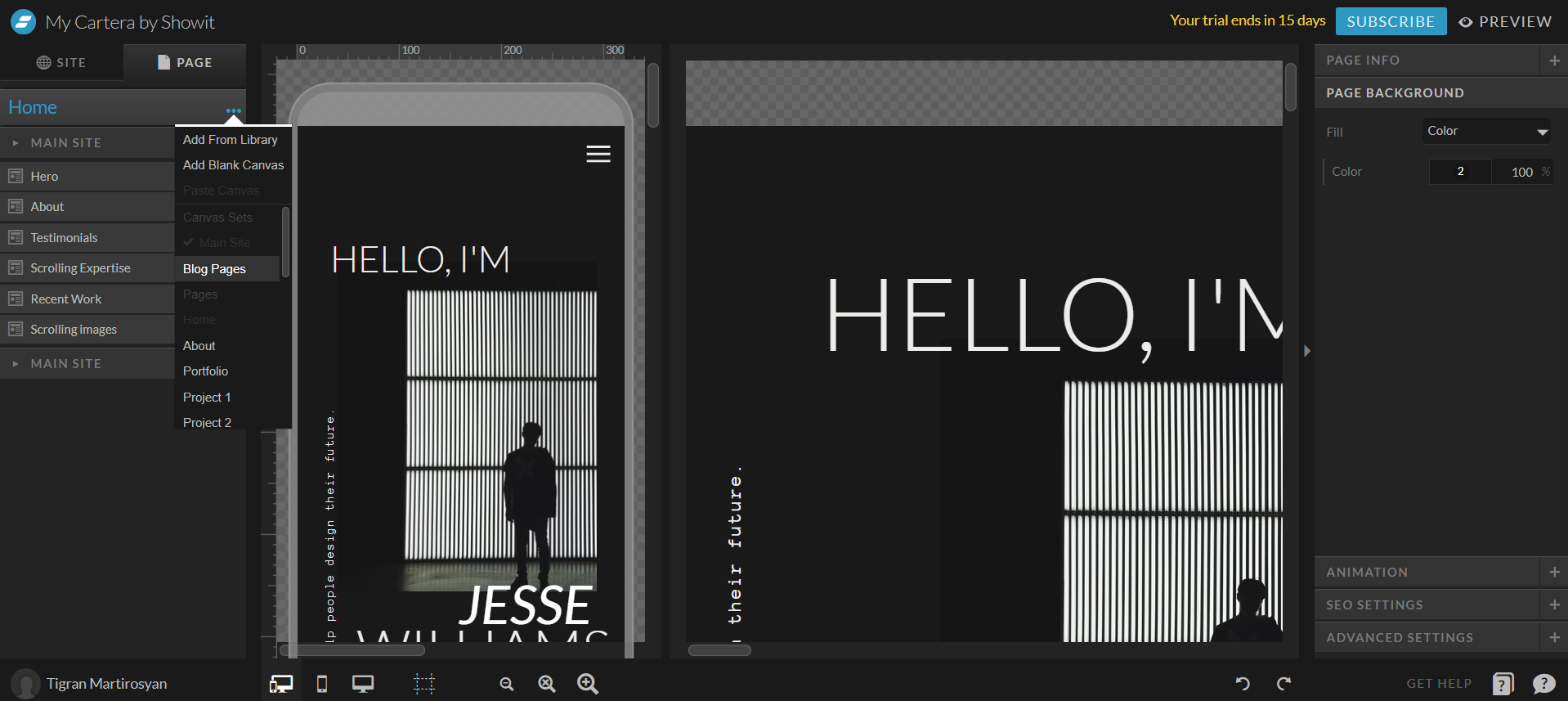
Shopify’s editor, scoring 7.9, excels in providing a streamlined, ecommerce-focused editing experience. It’s particularly beneficial for users who prioritize efficient management of online stores. The editor is straightforward, making it easy to add products, manage inventory, and set up payment methods. While it may not offer the same level of design flexibility as Showit, Shopify’s editor is optimized for sales and business growth, with built-in tools specifically designed for ecommerce businesses.
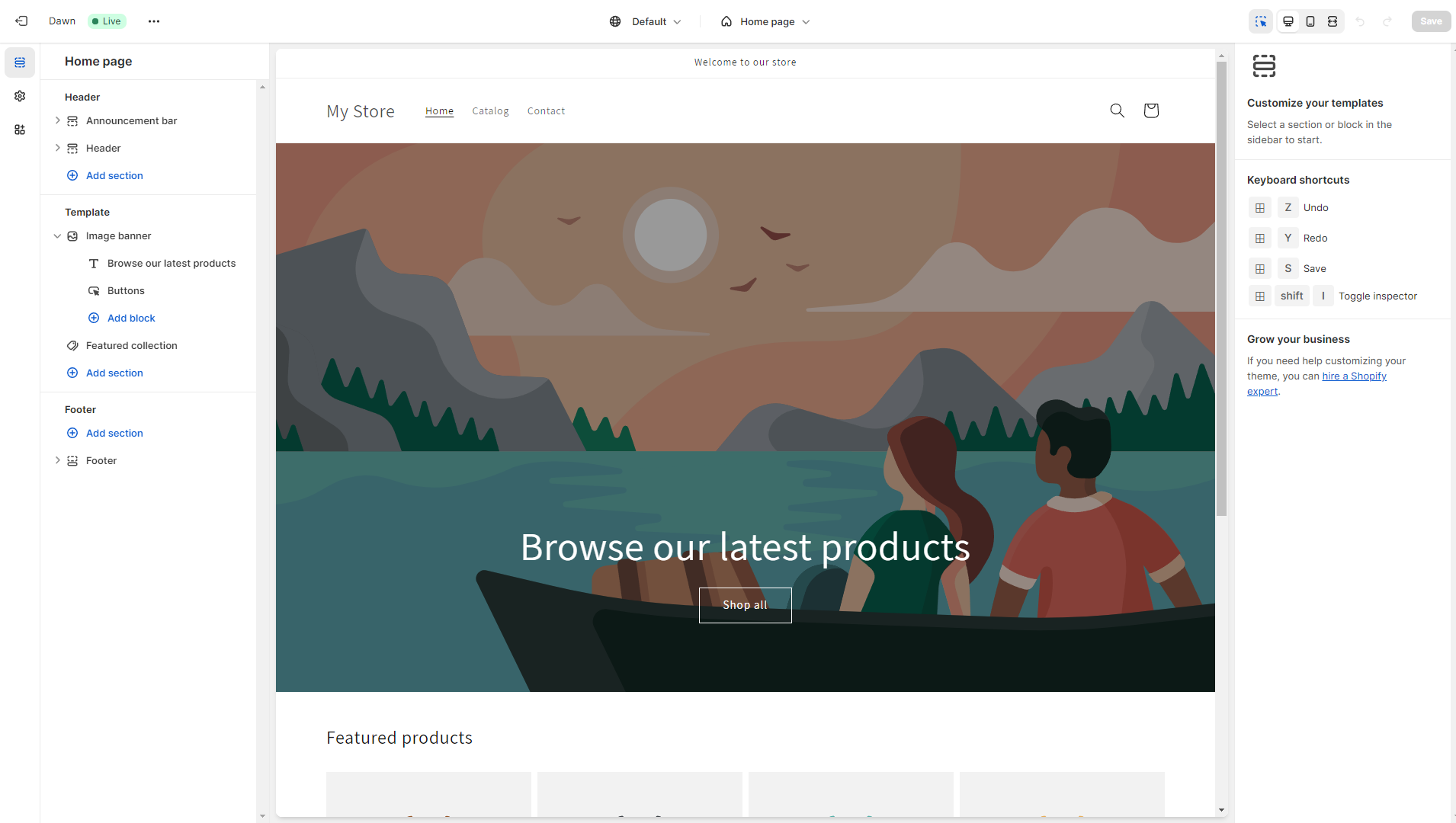
Mobile editor/app
 8.0
8.0
 0
0
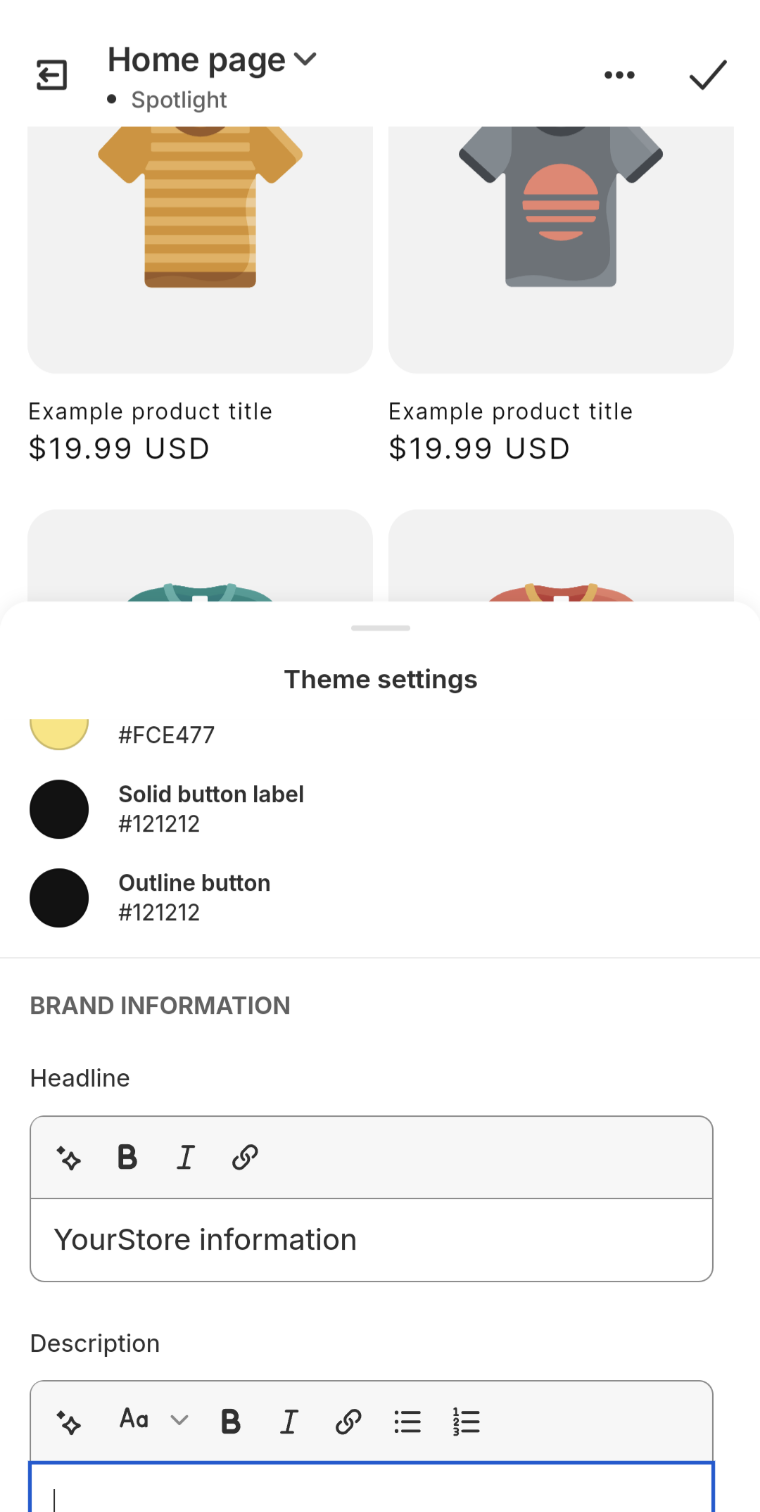
🏆
Winner: Shopify
. Shopify and Showit both offer unique features in their website builders, but when it comes to mobile editing, Shopify takes the lead. Shopify’s mobile app includes a user-friendly mobile theme editor that allows users to customize their online store website directly from their mobile device. This feature enables the addition, removal, editing, and rearrangement of content on the store’s website, offering convenient on-the-go adjustments to the store’s appearance and layout.
Showit, on the other hand, does not have a dedicated mobile editor app, and it’s not possible to edit a Showit website using a mobile browser version. This lack of mobile editing capabilities puts Showit at a disadvantage in this category.
In summary, Shopify receives a higher rating due to its mobile editing capabilities, while Showit is at a disadvantage due to the lack of a mobile editing feature.
Product testing options
Product Testing OptionsAssesses the options for trying out platform features before commitment.Score Components:
- Trial quality (40%): Extent and usefulness of the trial or free version.
- Feature accessibility (30%): How many features are available to test.
- Trial duration (20%): Length of the trial period.
- Ease of transition (10%): Smoothness of moving from trial to paid plans.
 8.1
8.1
 8.3
8.3
Overall Result
:
Showit Wins
. Showit scores slightly higher than Shopify in product testing options with a score of 8.3 against Shopify’s 8.1. Both platforms offer a 14-day free trial with access to all premium features. However, Showit stands out with its 30-day money-back guarantee, providing users with a longer safety net.

|

|
|
|---|---|---|
|
Free Plan |
No (14-day free trial) | No (14-day free trial) |
|
Trial Duration |
14 days | 14 days |
|
Testing Premium Features |
All features during free trial | All features during free trial |
|
Money Back Guarantee |
No |
Yes (30 days) |
Price
PriceLooks at the cost-effectiveness and value for money of each platform.Score Components:
- Plan value (40%): What each pricing tier offers.
- Transparency and clarity (30%): Clearness of pricing structures.
- Flexibility of plans (20%): Range of options to suit different budgets.
- Hidden costs (10%): Additional expenses not included in the plan.
 8.2
8.2
 7.9
7.9
Shopify and Showit offer competitive pricing, but Shopify’s ecommerce features and Showit’s design flexibility cater to different user needs.

|

|
|
|---|---|---|
|
$20-$25 |
No offering at this amount. |
Showit ($24/month): Ideal for sites without a blog. Includes 20GB storage and secure certificate. Regular design backups stored for 7 days. Value for price: 6.0 |
|
$25-$30 |
Shopify Basic ($29/month): Unlimited products, 2.9% + 30¢ card fee with Shopify payments, Extra 2% gateway fee without Shopify Payments, Abandoned cart recovery, Automated sales tax, Digital products, POS Integration, 2 staff accounts. Value for price: 8.0 |
Showit + Basic Starter Blog ($29/month): For new blogs. Includes everything in the Showit plan, plus blog-specific features. 20GB storage, up to 10k monthly visitors, daily backups stored for 30 days, pre-installed plugins (no additional plugins are permitted), 1 WordPress user. Value for price: 7.0 |
|
$30-$40 |
No offering at this amount. |
Showit + Advanced Blog ($39/month): For migrating or high-traffic blogs with custom plugin needs. Includes everything in the Basic Starter Blog plan, plus up to 25k monthly visits, unlimited number of plugins, unlimited number of WordPress users, Free advanced blog migration from WordPress or Squarespace and FTP access. Value for price: 8.0 |
|
$60-$80 |
Shopify Standard ($79/month): Lower card fees (2.6% + 30¢), Gift cards, Professional reports, 5 staff accounts. Value for price: 8.5 |
Showit + Advanced Blog 50k ($69/month): Includes everything in the Showit + Advanced Blog plan, with possibility to install custom WordPress plugins, 30 GB storage, up to 50k visitors monthly, and possibility to migrate Squarespace and WordPress blog posts. Value for price: 8.5 |
|
$100-$200 |
No offering at this amount. |
Showit + Advanced Blog 100k ($129/month): Includes everything in the Showit + Advanced Blog plan, with possibility to install custom WordPress plugins, 50 GB storage, up to 100k visitors monthly, and possibility to migrate Squarespace and WordPress blog posts. Value for Price: 9.0 |
|
$200+ |
Advanced Shopify ($299/month): Lowest card fees (2.49% + 30¢), Advanced report builder, Real-time carrier shipping, Up to 15 staff accounts Value for price: 8.8 |
No offering at this amount. |
location. As a result in rare cases the prices displayed here can differ from the ones you see on their
websites.
Hosting quality
Hosting
qualityExamines the reliability and performance of the hosting solutions.Score Components:
- Uptime (40%): Consistency and reliability of website availability.
- Speed (30%): Loading times and performance.
- Bandwidth and storage (20%): Sufficiency of resources provided.
- Data centers (10%): Quality and distribution of hosting infrastructure.
 9.0
9.0
 7.3
7.3
Winner: Shopify
. Shopify’s proprietary cloud-based hosting, with a 99.99% uptime guarantee and global data centers, is designed for high-traffic online stores. Showit, on the other hand, offers managed WordPress hosting with a 99.9% uptime guarantee, but does not disclose information about its data centers. This lack of transparency, along with a lower uptime, results in a lower rating for Showit.

|

|
|
|---|---|---|
|
Do they offer hosting? |
Yes, included in all paid plans |
Yes, Managed wordpress hosting, with daily backups and 20GB storage |
|
Data Centers: |
5 globally: USA (Ashburn, Virginia; Santa Clara, California), Canada (Toronto, Ontario), Ireland (Dublin), and Singapore |
Showit does not disclose any information about its data centers |
|
Type of hosting: |
Proprietary cloud-based hosting |
Managed WordPress hosting |
|
Uptime: |
99.99% |
99.9% |
|
Uptime Guarantee: |
Yes, 99.99% |
Yes, 99% |
Website Speed Optimization
Website Speed OptimizationEvaluates optimization of website loading timesScore Components:
- PageSpeed Score (30%): Google’s score indicating performance optimization.
- Loading Time (30%): The average time until a website is fully interactive.
- Mobile Optimization (15%): Optimization effectiveness for mobile devices.
- Resource Optimization (15%): Optimizing images, scripts, and other heavy resources.
- CDN Usage (10%): Use of CDN to enhance speed across geolocations.
 7.8
7.8
 5.4
5.4
🏆 Winner: Shopify
Both Shopify and Showit prioritize website performance and page speed, but Shopify’s more detailed strategies and higher score give it the edge in this comparison.

|

|
|
|---|---|---|
|
Focus |
App optimization, Google AMP |
Optimization plugins, Caching |
|
Performance Tools |
Google Lighthouse, PageSpeed Insights |
Not specified |
|
Key Strategies |
App efficiency, Theme optimization |
Optimization plugins, Caching |
|
Load Times |
Varies widely, dependent on optimization |
Varies depending on optimization and website complexity |
|
Page Speed Scores Range |
Scores vary; influenced by apps, images |
Not specified |
|
Core Web Vitals Improvement |
Emphasis on LCP, FID, CLS improvements |
Not disclosed |
Shopify places a strong emphasis on website performance and page speed. Its approach to enhancing site speed includes app optimization by removing unneeded app code, conditionally loading apps, avoiding immediate pop-up displays, and incorporating app functionality directly into themes. This approach leverages Shopify’s fast servers and CDN network to boost load speed. Shopify also suggests utilizing Google AMP for faster mobile page loads, although with some design compromises. Analysis of three Shopify sites showed a range of Shopify speed scores from 14 to 75, Google PSI scores from 8 to 80, and load times varying from 10.6 seconds to 2.3 seconds. Continuous maintenance and optimization are essential for keeping Shopify stores fast.
Showit, on the other hand, does not provide as much detail about its speed optimization strategies. It mentions the use of optimization plugins and caching, but does not provide specific information about load times, page speed scores, or Core Web Vital improvements. This lack of transparency makes it difficult to assess the effectiveness of Showit’s speed optimization efforts.
Get a head start on website creation with AI
Create a custom website tailored to your business needs 10X faster with 10Web AI Website Builder!
Plugins and integrations
Plugins and integrationsMeasures the range and effectiveness of additional plugins and integrations.Score Components:
- Variety of options (40%): Range of available add-ons.
- Integration smoothness (30%): Ease of integrating plugins into the site.
- Quality of plugins (20%): Functionality and reliability of the options.
- Custom integration capabilities (10%): Support for custom or third-party integrations.
 8.7
8.7
 5.8
5.8
🏆 Winner: Shopify.
Shopify, with a score of 8.7, offers a wide range of plugins and integrations that enhance ecommerce functionalities. It offers over 8,000 apps in its App Store, covering a wide range of functionalities. These apps come with various pricing options, including free, paid, freemium, and one-time payment models. Key Shopify integrations feature Oberlo for dropshipping, Klaviyo for email marketing, Yotpo for reviews, Printful for print-on-demand, Shopify POS for sales, Google Analytics for insights, Facebook Channel for social selling, ShipStation for shipping, QuickBooks for accounting, Privy for conversions, Smile.io for loyalty, SEO Manager, AfterShip for tracking, Spocket for products, and Gorgias for customer service, enhancing various ecommerce aspects.
On the other hand, Showit, with a score of 5.8, offers a variety of plugins primarily for users with the Advanced Blog plan, enhancing website functionality across SEO, spam protection, and more. However, the availability and use of these plugins are contingent upon the subscription tier, with higher tiers required for broader plugin compatibility and additional features. Notably, compatibility issues exist with certain WordPress plugins, necessitating alternative solutions or adjustments for optimal functionality. Showit integrates with a variety of platforms to enhance your website’s functionality, and one notable integration is with Powr.io. Powr.io offers a range of widgets that can be embedded into your Showit site, helping to improve business management and customer experience. This platform provides options from free to paid plans, allowing for customization according to your needs. For more details on integrating Powr.io with Showit, you can visit the Showit Help Center. Integrations can be accessed directly through website editor.
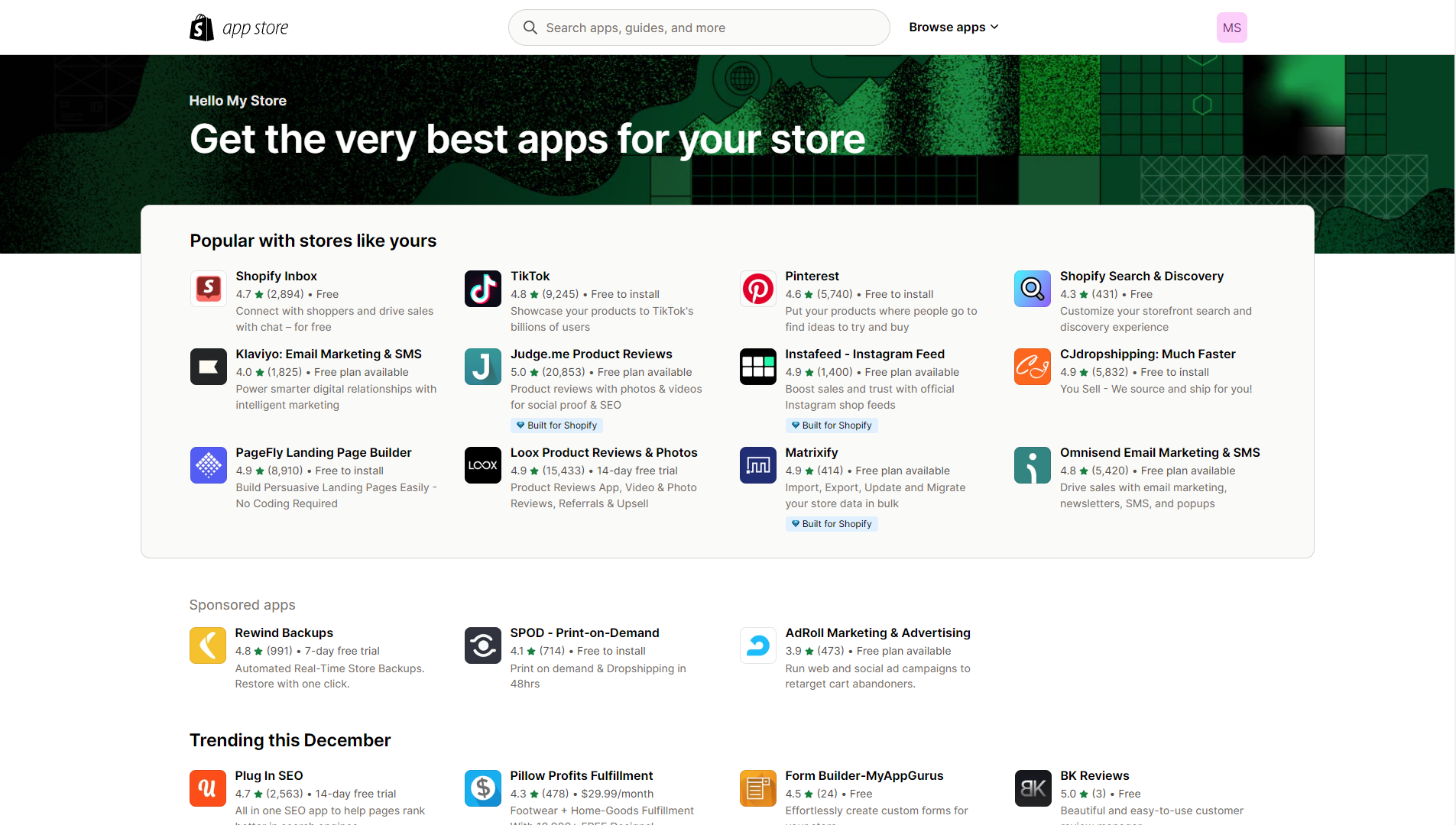
Marketing Features
Design FunctionalitiesRepresents how well each platform allows for creative design and customization of websites.Score Components:
- Template Variety (30%): Range and quality of design templates.
- Customization (30%): Flexibility and options for design alterations.
- User Interface (20%): Ease and intuitiveness of the design process.
- Responsiveness (10%): Adaptability to different devices and screen sizes.
- Innovation (10%): Unique design features and tools.
 8.8
8.8
 7.2
7.2
Overall Winner: Shopify
. Shopify stands out for its more advanced ecommerce-focused marketing tools, especially in analytics and ad campaign management. Showit, while offering a range of marketing features, relies on third-party integrations for some of its functionalities.

|

|
|
|---|---|---|
|
SEO Tools |
|
|
|
Email Marketing |
|
✓ (through third-party integrations) |
|
Blogging |
|
|
|
Social Media Integration |
Advanced integration for selling directly on social platforms |
✓ |
|
Analytics and Reporting |
Detailed analytics for in-depth insights |
Yes, through integration of Google Analytics |
|
Ads and Promotions |
Google Ads integration; sophisticated ad campaign management |
Yes, through third-party integrations |
Customer Support
Customer supportEvaluates the quality and availability of support options.Score Components:
- Response time (40%): Speed of support responses.
- Support quality (30%): Effectiveness and helpfulness of the support.
- Availability (20%): Range of support channels (phone, chat, email).
- Resource richness (10%): Quality of self-help and educational materials.
 8.6
8.6
 6.4
6.4
🏆 Winner: Shopify
. In the Shopify vs Showit comparison, Shopify takes the lead with a customer support score of 8.6. Shopify offers 24/7 support through chat, email, and phone, ensuring that users can get help whenever they need it. The platform also provides clear tutorials, an extensive community forum, and a valuable marketing blog, making it easier for users to find solutions and grow their businesses.
Showit, on the other hand, has a customer support score of 6.4. It provides support via email from Monday to Friday, 7 AM to 11 PM Arizona Time, with a typical response time of 1-2 hours. Showit also offers chat support during business hours and limited support on weekends. While Showit’s support is responsive during business hours, it lacks the round-the-clock availability that Shopify offers, which can be crucial for businesses operating in different time zones or needing immediate assistance.
For enterprise-level support, Shopify excels with dedicated account managers, 24/7 priority support, and additional resources like the Shopify Plus platform and exclusive events. Showit does offer an enterprise-level custom plan, but specific details on enterprise support are not provided.
Security
SecurityLooks at the platforms’ security measures and data protection.Score Components:
- Data protection (40%): Safeguards for user and customer data.
- SSL and encryption (30%): Implementation of secure connections.
- Compliance (20%): Adherence to industry security standards.
- Regular updates (10%): Frequency of security updates and patches.
 9.0
9.0
 8.3
8.3
🏆
Winner: Shopify
. Shopify’s security measures are comprehensive and rigorous, especially for ecommerce. They prioritize data privacy and security through secure infrastructure, encryption, and limited access. They comply with data privacy regulations, practice data minimization, and ensure user control and transparency. Additional security measures include two-factor authentication, regular audits, and a dedicated incident response team. Shopify ensures website security with SSL certificates encrypting data, verifying website identity, and offering SEO benefits. Free SSL certificates are provided, with options for upgrades. The built-in Web Application Firewall filters and blocks threats, and users can add third-party firewalls for extra control and security.
Showit also prioritizes user data privacy and security, adhering to GDPR guidelines for European customers and employing Amazon’s S3 for secure and redundant data storage. Showit provides robust security features for all hosted websites, including free SSL certificates for secure HTTPS connections and automated backups. For WordPress-integrated sites, additional protections are in place, such as firewall protection, disc write protection, and automatic updates for WordPress Core, PHP, and MySQL. However, Shopify’s security measures are more comprehensive, earning it a higher security score of 9.0 compared to Showit’s 8.3.
AI Capabilities
AI capabilitiesMeasures the effectiveness of AI-driven features and tools.Score Components:
- Automation efficiency (40%): Impact of AI on streamlining processes.
- Personalization (30%): AI-driven customization for users or customers.
- AI-Assisted design (20%): Role of AI in website design and functionality.
- Data analysis (10%): Use of AI in interpreting user data and analytics.
 7.9
7.9
 0
0

|

|
|
|---|---|---|
|
Personalized Design |
|
|
|
SEO Optimization |
AI-driven recommendations for better search engine visibility |
|
|
Customer Behavior Analysis |
Advanced analytics to understand customer preferences |
|
|
Sales Predictions |
AI-powered sales forecasting tools |
|
|
Inventory Management |
AI tools to assist in efficient inventory handling |
|
|
Content Generation |
AI assistance in creating and optimizing site content |
|
🏆 Winner: Shopify
. Shopify, with a score of 7.9, utilizes AI mainly to enhance the ecommerce experience. Its AI features focus on customer behavior analysis, personalized shopping experiences, inventory management, and sales predictions.
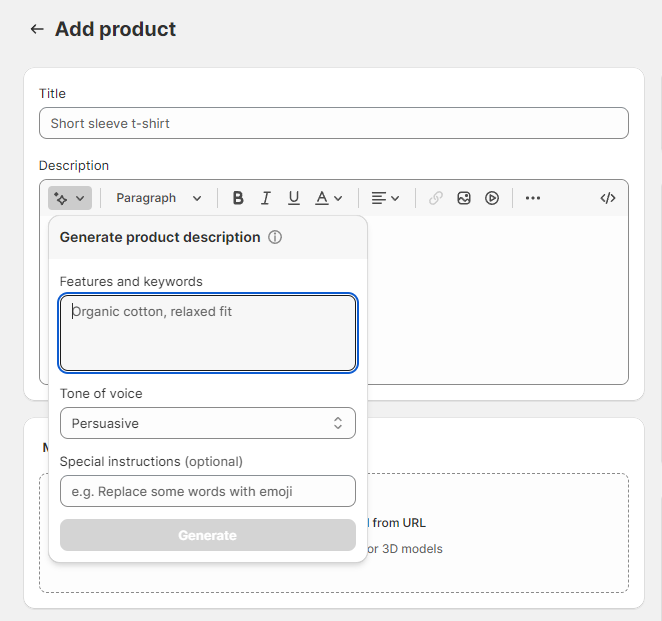
On the other hand, Showit does not have any AI capabilities. This lack of AI features may limit the functionality and user experience of the platform, particularly for users seeking advanced features such as AI-driven content generation or SEO optimization.
User Management
User ManagementAssesses the platforms’ capabilities in managing user roles, permissions, and accessibility.Score Components:
- Role Customization (40%): Flexibility in creating and defining user roles and
permissions. - Ease of Management (30%): User interface and tools for managing users.
- Access Control (20%): Effectiveness of access control measures for different user
levels. - Scalability (10%): Ability to manage a growing number of users efficiently.
 6.5
6.5
 6.7
6.7
🏆 Winner: Showit
. Managing your online team with Shopify and Showit involves different approaches to website editing access.
-
Shopify enforces staff account limits based on plans, ranging from 2 to 15, with Shopify Plus offering unlimited
accounts. Collaborators with limited access are also an option. - Showit allows only one user on lower plans, on it’s Showit + Advanced Blog plan the platform allows unlimited number of users with different access levels.
Both platforms support simultaneous editing. Shopify uses avatar icons to indicate co-workers, while Showit displays a warning for concurrent editing, preventing accidental overwrites.
Shopify User Roles and Access Levels:
| Role | Description | Access Highlights |
|---|---|---|
| Store Owner | Full control over store | Manage products, orders, discounts, payments, apps, settings. Create and manage staff accounts. |
| Staff | Configurable access by owner |
Add/edit products, manage orders, fulfill orders, manage customers, update content. Access level can be customized by the owner. |
| Collaborator | Limited access for external partners | View and manage specific sections like blog or product categories. Cannot access full store settings. |
Showit User Roles and Access Levels:
| Role | Description | Access Highlights |
|---|---|---|
| Administrator | Users with full access to all administration features, including Elementor settings. | Can edit all content, Access to Elementor settings, Can install plugins and themes, Can manage users |
| Editor | Users who can manage and publish content including pages and posts. | Can edit pages/posts created with Elementor, Cannot access Elementor settings, Can manage categories, tags, and links, Can moderate comments |
| Author | Users who can publish and manage their own posts. | Can create posts with Elementor, Cannot edit pages, Limited access to media library, Cannot access Elementor settings |
| Contributor | Users who can write and manage their own posts but cannot publish them. | Can create content with Elementor, Cannot publish or edit pages, No access to Elementor settings, Submissions require review by higher-level roles |
Additional Features

|

|
|
|---|---|---|
|
SSL Certificate |
|
|
|
Custom Domain |
|
|
|
Free Custom Domain Included |
|
|
|
International Domains |
|
|
|
Mobile Responsive |
|
|
|
Page Speed |
|
|
|
Website Builder Mobile App |
|
|
|
Convert a Website To An App |
|
|
|
Website Analytics |
|
|
|
Multilingual Sites |
|
|
|
Multiple Users |
|
|
User Feedback
Shopify’s slightly higher rating on G2 Crowd can be largely attributed to its specialization in ecommerce. Its comprehensive features, ease of use, and robust customer support cater specifically to online businesses, leading to high user satisfaction among those seeking a dedicated ecommerce solution.
Showit, while not available on G2, is highly regarded among creative professionals such as photographers, designers, and bloggers. Its unique dual canvas interface and seamless integration with WordPress for blogging provide a high degree of customization and control, making it a popular choice for users who prioritize design flexibility and a tailored website appearance when comparing Shopify vs Showit.
The making of this blog
We followed a clear, step-by-step process to write and research this article.
FAQ
Can I use Shopify or Showit for my online store?
Which platform is better for creative professionals like photographers and designers?
How do Shopify and Showit compare in terms of ease of use?
What are the main differences in pricing between Shopify and Showit?
Which platform offers better customer support?
Can I manage a blog with Shopify or Showit?
Which platform is more secure for my website?
Are there any AI capabilities in Shopify or Showit?












